Explainer: The age of dinosaurs
Known as the Mesozoic, much happened over its more than 180 million years — just ask the dinos
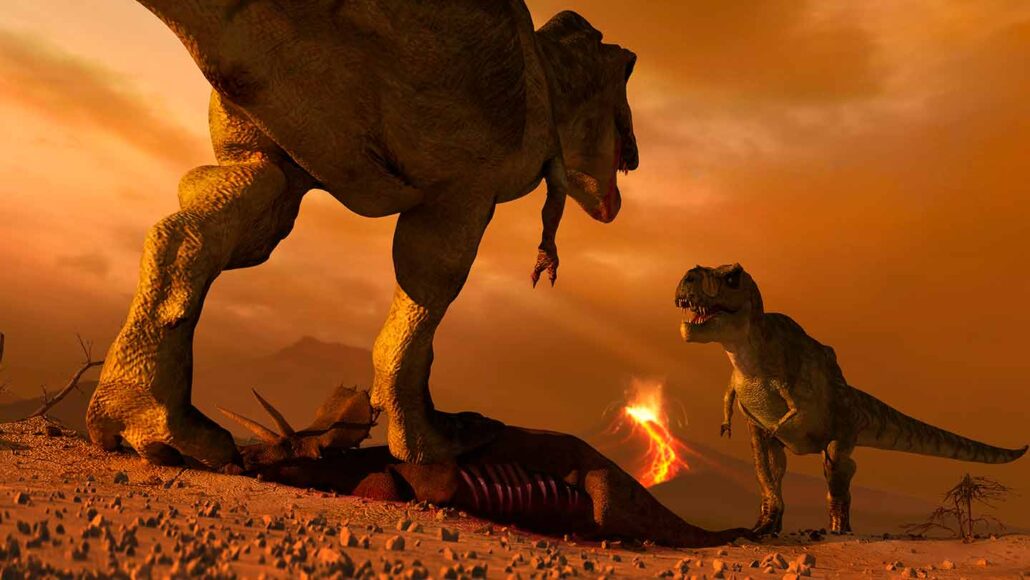
Two T. rexes face off over a triceratops corpse. During the three periods of the Age of Dinosaurs, geologic events played a major role in the environmental conditions that led to dinosaur dominance. Among those events: the intense volcanism in this artist’s depiction of the Cretaceous,
MARK GARLICK/Photo Science Library/Getty Images Plus
By Beth Geiger
A duck-billed hadrosaur quietly munches on ferns. Pterosaurs fly overhead. Suddenly, a hungry Tyrannosaurus rex bursts from the underbrush. With a slash of its sharp teeth, T. rex makes a quick meal of the hadrosaur.
That’s the movie version. But what really happened during the Age of Dinosaurs?
This Mesozoic Era began 252 million years ago. It would continue for 186 million more. It all started just after the largest mass extinction in history. Called the Great Dying, that event marked the sudden disappearance of at least 95 percent of species in the sea. Some 70 percent of those on land also died off. Such extensive losses cleared the way for an explosion of new species.
A lot of planet-altering events marked this era, notes Steve Brusatte. Continents moved. Vast volcanic eruptions triggered changes in climate. Evolution also brought us dinosaurs, notes this paleontologist at the University of Scotland in Edinburgh. And, he adds, they “thrived for over 150 million years.” But to do so, they had to adapt to many different types of climate and environments. So did plenty of other fascinating creatures that walked, swam, flew and crawled among them.
Here we meet the Mesozoic Era’s three defining time periods.
The Triassic: 252 to 201 million years ago
At the Triassic’s dawn, all of Earth’s continents were lumped together in one big super-continent known as Pangaea (Pan-JEE-uh). At its center, far from coastlines, the climate was hot and dry — maybe too extreme for most life.
Over the next tens of millions of years, the motion of tectonic plates began to stretch Pangea apart. Lava poured from growing gaps, or fissures, in Earth’s crust. These eruptions spewed carbon dioxide (CO2), a climate-warming greenhouse gas. That CO2 also triggered some wild climate ups and downs.
Jessica Whiteside studies Triassic history. She’s a geochemist at the University of Southampton in England. This period’s first 20 million years were “violently variable,” she says. Temperatures ranged from “really hot to ridiculously hot,” she notes — between 50º and 60º Celsius (122º and 140º Fahrenheit).
Along with extreme temps were some especially soggy periods. Together, they influenced evolution. For example, one brief but extra rainy stretch from 234 to 232 million years ago gave a leg up to some animals in certain regions.
Among plants that flourished throughout the Triassic were ferns and conifers, trees that produce cones and have needle-like leaves. Reptiles began to dominate the animal world. They included lizards, tortoises, countless crocodiles — and, of course, dinosaurs. “Their rise seems to be linked to fissure eruptions of unimaginable scale,” Whiteside says.
Early dinos didn’t just appear during this time of high volcanic activity, she notes. They also diversified into three main types: plant-eating sauropods, meat-eating theropods and beaked, plant-eating ornithischians. But none were giants. “These first dinosaurs were small and humble,” Brusatte explains, “just about the size of small dogs.”
With all the continents connected, you might think dinosaurs and other animals might easily spread from one region to another. But that didn’t happen, Whiteside says. “The equatorial areas were alternately horribly hot and dry and torrentially rainy with deadly floods,” she explains. “Raging wildfires left landscapes barren of trees.” Only meat-eating dinos that didn’t depend on plants could survive at tropical sites during the Triassic, notes Whiteside.
This Period ended as the one before it had — with a significant mass extinction. Half of all species may have gone extinct at this time. The cause and length of this extinction event is poorly understood. But once more, important ecological holes were left to fill.
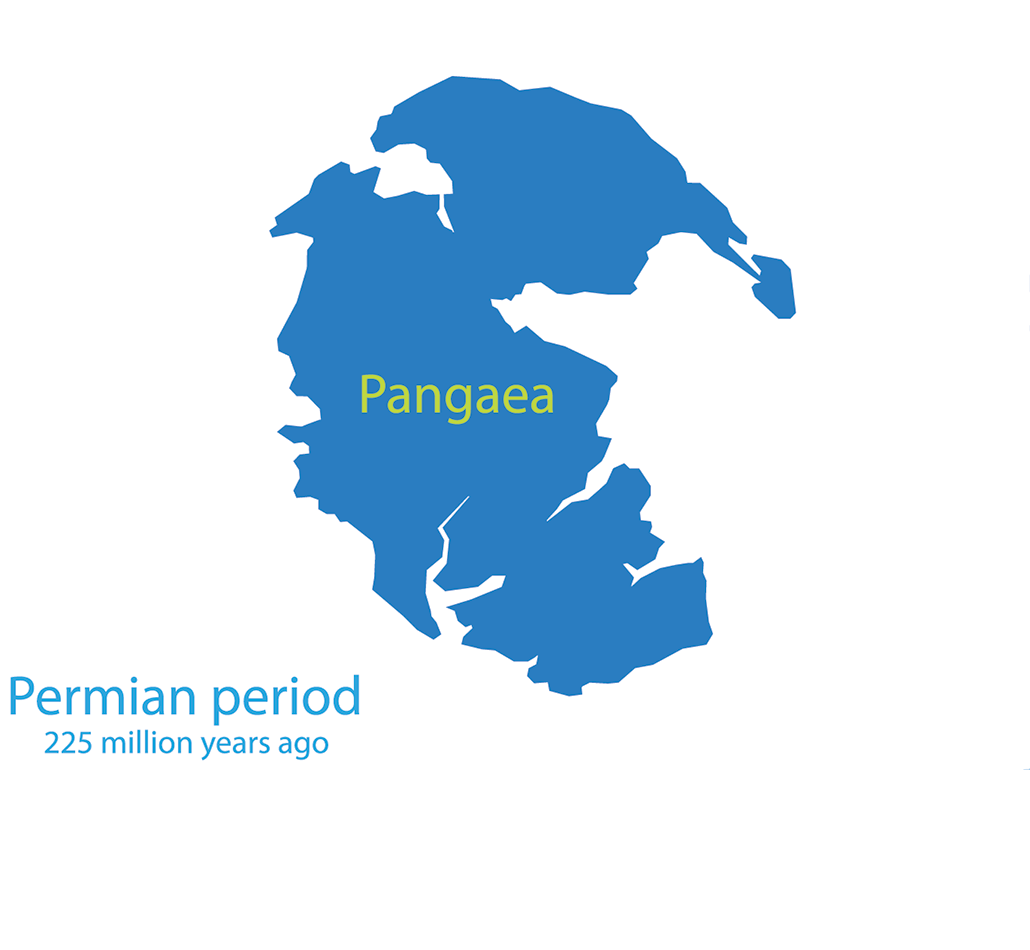
During the last period of the Paleozoic Era — called the Permian period — Earth’s continents were lumped together into a supercontinent called Pangea. The great size of this continent had a powerful influence on climate. For example, drought conditions were widespread since so much of Earth’s land was far from oceans. Its inland areas also experienced extreme swings in temperature, similar to the American Midwest today. 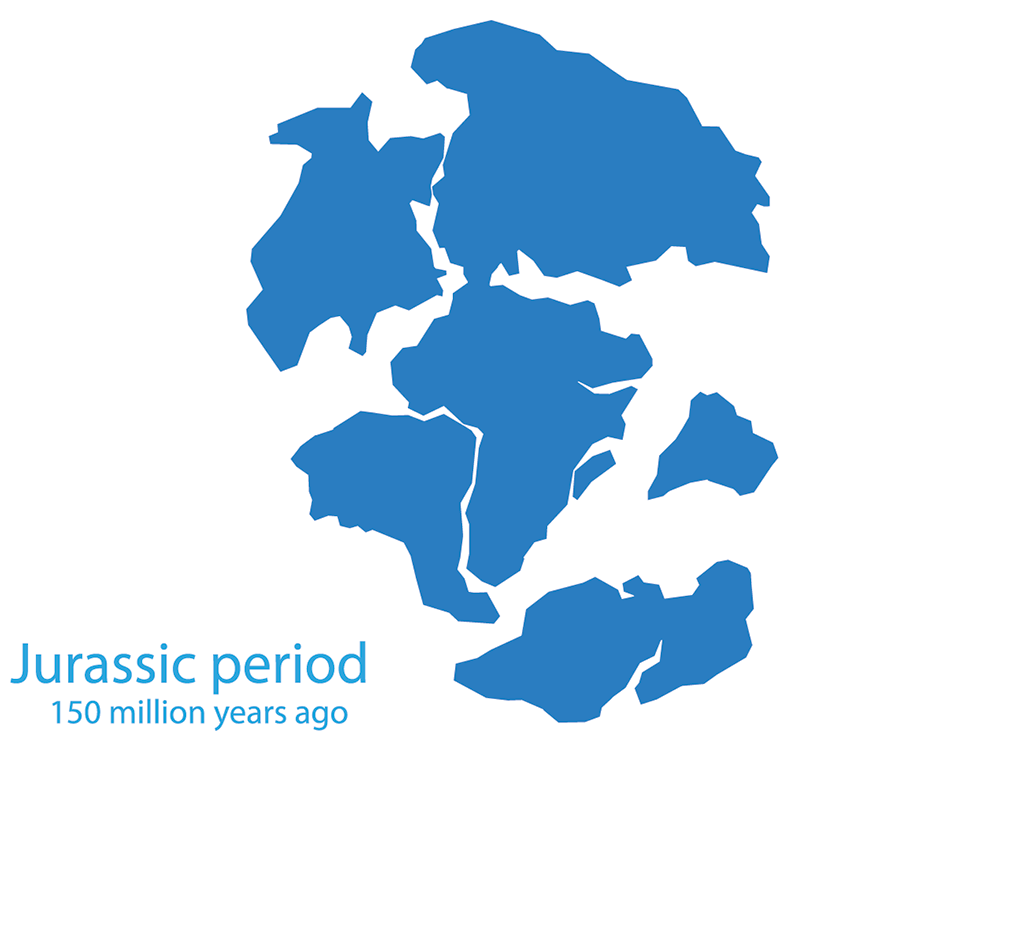
During the Jurassic period, Earth’s continents continued to separate. Vast outpourings of lava issued from the growing rifts. That volcanism likely added the carbon dioxide, a greenhouse gas, to the atmosphere. This would have caused warm temperatures. In many areas, shallow oceans developed along the edges of the continents. 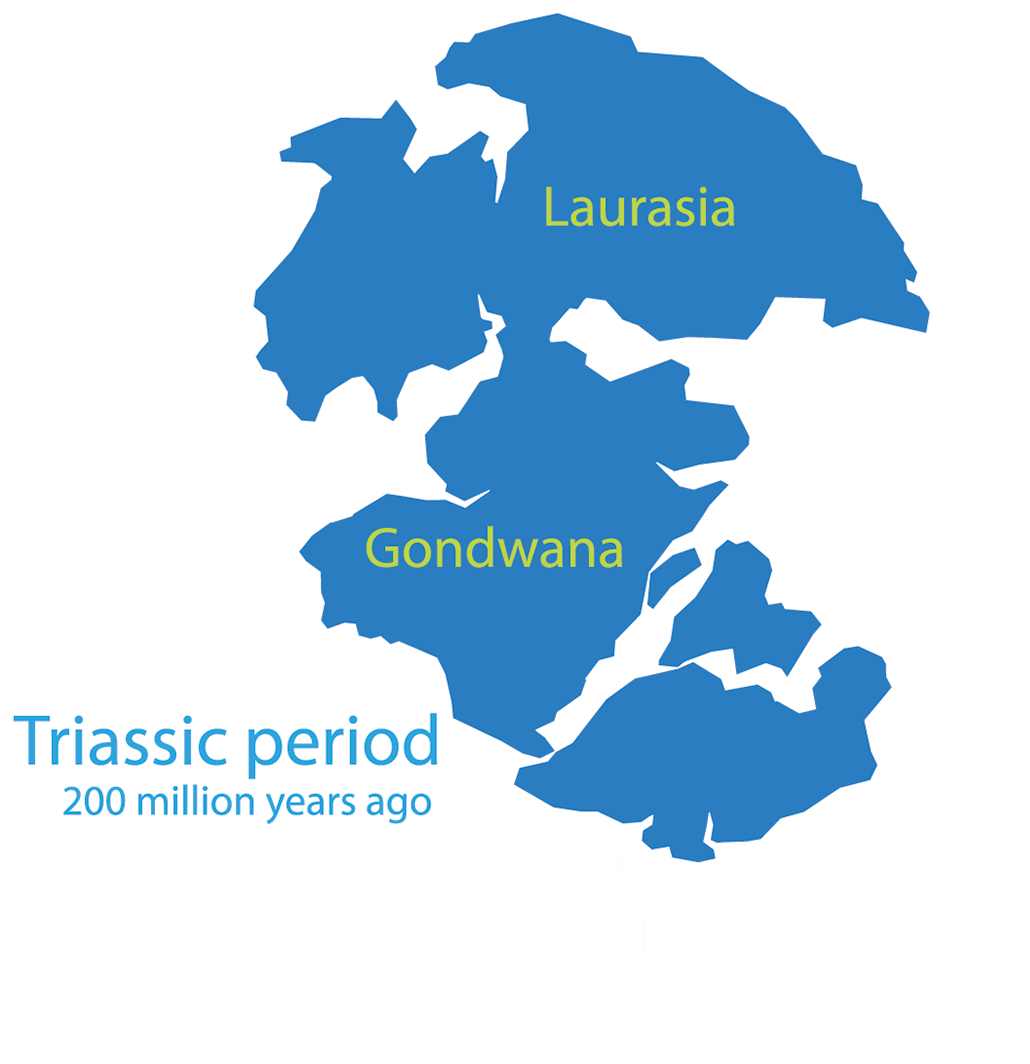
As the Mesozoic Era began, during its Triassic period, Pangea began to very slowly break apart. It broke into smaller, but still vast, northern and southern supercontinents. These were separated by a warm, east-west sea called the Tethys Ocean. 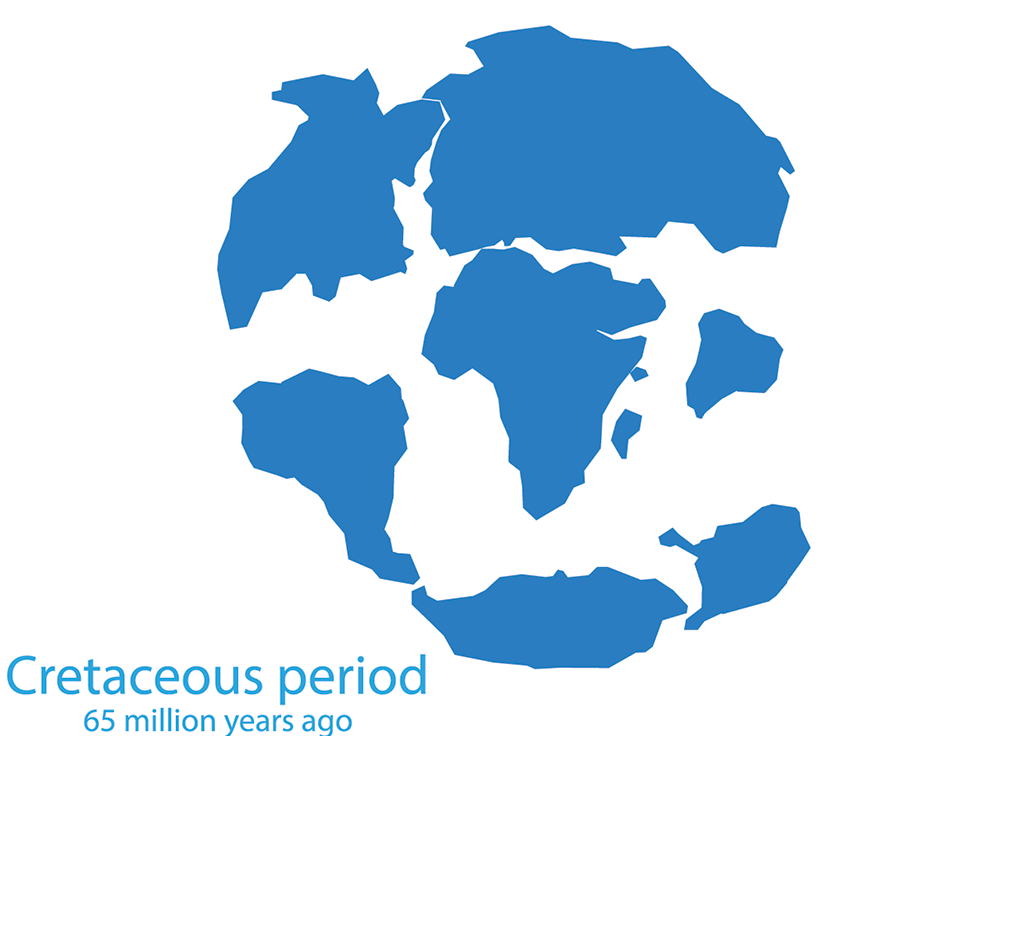
During the Cretaceous period, a gap between North and South America and Africa widened to become the Atlantic Ocean. As the continents further separated, plants and animals that lived on each also evolved separately. In addition, a shallow sea called the Western Interior Seaway flooded much of North America. 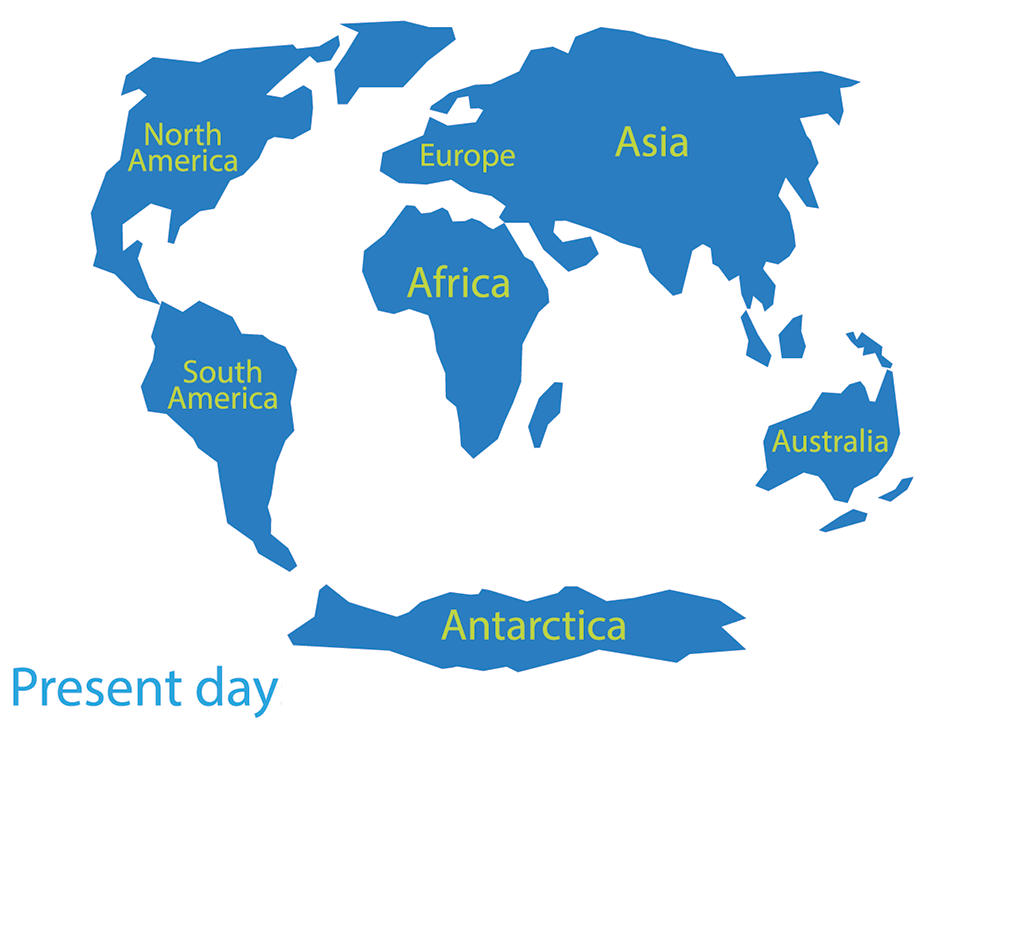
When the Mesozoic Era ended 66 million years ago — at the end of the Cretaceous period — Earth’s continents were now separated by huge oceans, similar to their configuration today.All map illustrations: Tinkivinki/iStock/Getty Images Plus
The Jurassic Period: 201 to 145 million years ago
“Dinosaurs had several key adaptations that helped them to thrive in the wake of the end-Triassic extinction,” Whiteside says. One of the most obvious: the ability to stand upright. Less obvious, she notes, were their “highly efficient lungs that essentially ran through their entire bodies.” In the end, these traits helped many dinos evolve to gigantic beasts during the Jurassic Period.
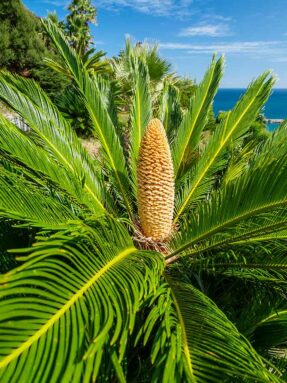
Meanwhile, Pangaea really began to split apart. One fissure grew to become the young Atlantic Ocean. South America, Africa, North America and India spread apart and became separate continents.
In the Jurassic, pliosaurs patrolled the seas. These carnivores spanned some 15 meters (about 50 feet) long. On land, the world buzzed with insects, especially beetles, flies and dragonflies. Mammals, most the size of squirrels, took a backseat to the growing community of huge reptiles.
Abundant now, as throughout the Mesozoic, were cycads — palm-like plants with seed-producing cones. And conifers really went wild. In fact, the long necks of plant-eating dinosaurs probably evolved to reach the top leaves of tall conifers. Changes in bone structure gave reptiles the larger digestive system they needed to eat these tough plants.
The plant-eating sauropod dinos reached their greatest diversity, abundance and size in the Late Jurassic. By the end of this period, conifers had begun to decline in relative abundance. With that decline came a drop in the share of long-necked plant-eating dinosaurs.
The Cretaceous Period 145 to 66 million years ago
By the emergence of the Cretaceous Period, Pangaea had completely splintered into separate continents and islands. The Atlantic had become a full-size ocean. Another shallow ocean, called the Western Interior Seaway, flooded what is now much of the midwestern United States and Canada.
With enormous seas now separating land masses, ocean currents began circulating between continents and toward the poles. That, plus periods of high CO2, gave the whole planet a relatively mild climate. Even the poles were warm, with forests growing near both the North and South Poles.
The Cretaceous also marked the emergence of flowering plants. Their blooms gave rise to many new species of insects, such as ants, grasshoppers and butterflies.
Still, life wasn’t all roses. Some 120 million years ago, for example, the Oceanic Anoxic Event 1a marked the first of several times during the Cretaceous that oceans became anoxic, meaning greatly reduced in oxygen. Such conditions were likely triggered by massive volcanic eruptions, and would have triggered big shifts in ocean ecosystems.
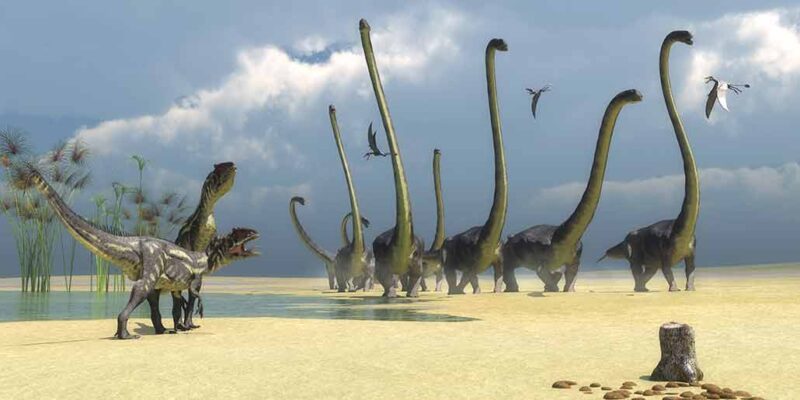
As the Cretaceous began to wrap up, the world’s land masses were sitting in places “similar to today’s map, with many separate continents — and different dinosaurs living on each,” notes Brusatte. For instance, paleontologists in Germany discovered a downsized version of a larger dinosaur in 2005. They now suspect this mini-dino evolved on an island. Its pint-sized range might not have offered enough food and room to support a mega-animal. And in some particularly cool regions, dinosaurs developed feathers to insulate against chilly temperatures.
Finally, 66 million years ago, the Mesozoic ended in a cataclysmic bang. As a giant meteorite crashed into Earth, the global climate changed overnight. This wiped out the dinosaurs, along with half of all plant and animal species! Like the Great Dying 186 million years earlier, this mass extinction set the stage for the next act. And that act featured the rise of mammals, like us.







